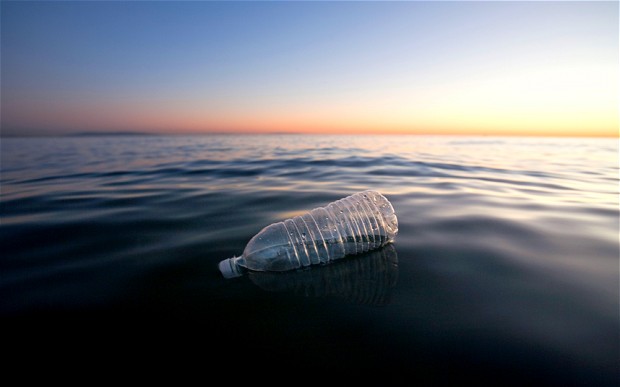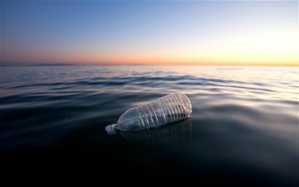Dailycsr.com – 02 October 2015 – As per the “four-point” plan suggested by the Ocean Conservancy, the marine plastic pollutant could be reduce by forty five percent by the year of 2025, while there is a further goal of “eradicating the issue” by the year of 2035. The said information was provided by a report from the Ocean Conservancy department which was issued on Wednesday, 1st of October 2015.
The four-point plan deals with land-based strategies, whereby the oceans are to become free of plastic. In fact, the said set of solutions is “a first-of-its-kind”, the same have been reported in collaboration with “the McKinsey Center for Business and Environment”. The latter has provided the outlines of the “specific land-based solutions” for marine plastic pollutants. The task would be started with eliminating leakage of plastic waste “in five priority countries”, which include Philippines, Thailand, Indonesia, China and Vietnam.
As per the estimated amount of the report, the project when implemented will cost “$5 billion a year”, besides providing “significant returns to the global economy”. Statistic data show that as much as “Eight million metric tons” of plastic waste find their way into the ocean waters annually due to leakage. However, the quantity plastic waste polluting the oceans seems to increase with the passing years. Therefore, Ocean Conservancy is of the opinion that:
“Without concerted global action, there could be one ton of plastic for every 3 tons of fish by 2025, leading to massive environmental, economic and health issues. And at least 80 percent of ocean plastic originates from land-based sources”.
The report urges for an immediate action towards “waste collection and plugging of post-collection leakage” whereby accelerating the development process which will also be followed by the “rollout of commercially viable treatment options”. Moreover, it also identifies the pressing requirement for “innovations in recovery and treatment technologies” that will benefit in the long run. In fact, the need for new material development along with better product design that “facilitate(s) reuse or recycling” is also stressed upon.
Solutions and approaches to any problem should be customised and solved at the “regional level”, claimed the report. This treatment should specially be applicable in the five “priority countries” wherein the amount of plastic pollutant accounts for the half of the global plastic waste leakage. Nevertheless, there is a growing awareness, whereby the countries have “have made major improvements in curbing plastic leakage”, yet a larger scale of global support is required to “scale impact swiftly”.
The coming decade will prove critical in respect of solving the “problem of ocean plastic”, informs SB, whereby success will come through:
“...a concerted global response driven by an international coalition of companies, governments and NGOs will need to catalyze commitments from political leadership, provide local ‘proofs of concept,’ provide waste management technology support and prioritize the ocean plastic waste issue as part of the global policy agenda on the ocean and the environment”.
References:
http://www.sustainablebrands.com
The four-point plan deals with land-based strategies, whereby the oceans are to become free of plastic. In fact, the said set of solutions is “a first-of-its-kind”, the same have been reported in collaboration with “the McKinsey Center for Business and Environment”. The latter has provided the outlines of the “specific land-based solutions” for marine plastic pollutants. The task would be started with eliminating leakage of plastic waste “in five priority countries”, which include Philippines, Thailand, Indonesia, China and Vietnam.
As per the estimated amount of the report, the project when implemented will cost “$5 billion a year”, besides providing “significant returns to the global economy”. Statistic data show that as much as “Eight million metric tons” of plastic waste find their way into the ocean waters annually due to leakage. However, the quantity plastic waste polluting the oceans seems to increase with the passing years. Therefore, Ocean Conservancy is of the opinion that:
“Without concerted global action, there could be one ton of plastic for every 3 tons of fish by 2025, leading to massive environmental, economic and health issues. And at least 80 percent of ocean plastic originates from land-based sources”.
The report urges for an immediate action towards “waste collection and plugging of post-collection leakage” whereby accelerating the development process which will also be followed by the “rollout of commercially viable treatment options”. Moreover, it also identifies the pressing requirement for “innovations in recovery and treatment technologies” that will benefit in the long run. In fact, the need for new material development along with better product design that “facilitate(s) reuse or recycling” is also stressed upon.
Solutions and approaches to any problem should be customised and solved at the “regional level”, claimed the report. This treatment should specially be applicable in the five “priority countries” wherein the amount of plastic pollutant accounts for the half of the global plastic waste leakage. Nevertheless, there is a growing awareness, whereby the countries have “have made major improvements in curbing plastic leakage”, yet a larger scale of global support is required to “scale impact swiftly”.
The coming decade will prove critical in respect of solving the “problem of ocean plastic”, informs SB, whereby success will come through:
“...a concerted global response driven by an international coalition of companies, governments and NGOs will need to catalyze commitments from political leadership, provide local ‘proofs of concept,’ provide waste management technology support and prioritize the ocean plastic waste issue as part of the global policy agenda on the ocean and the environment”.
References:
http://www.sustainablebrands.com


 Ocean Conservancy Plans To Eradicate Marine Plastic Waste
Ocean Conservancy Plans To Eradicate Marine Plastic Waste





 Companies
Companies